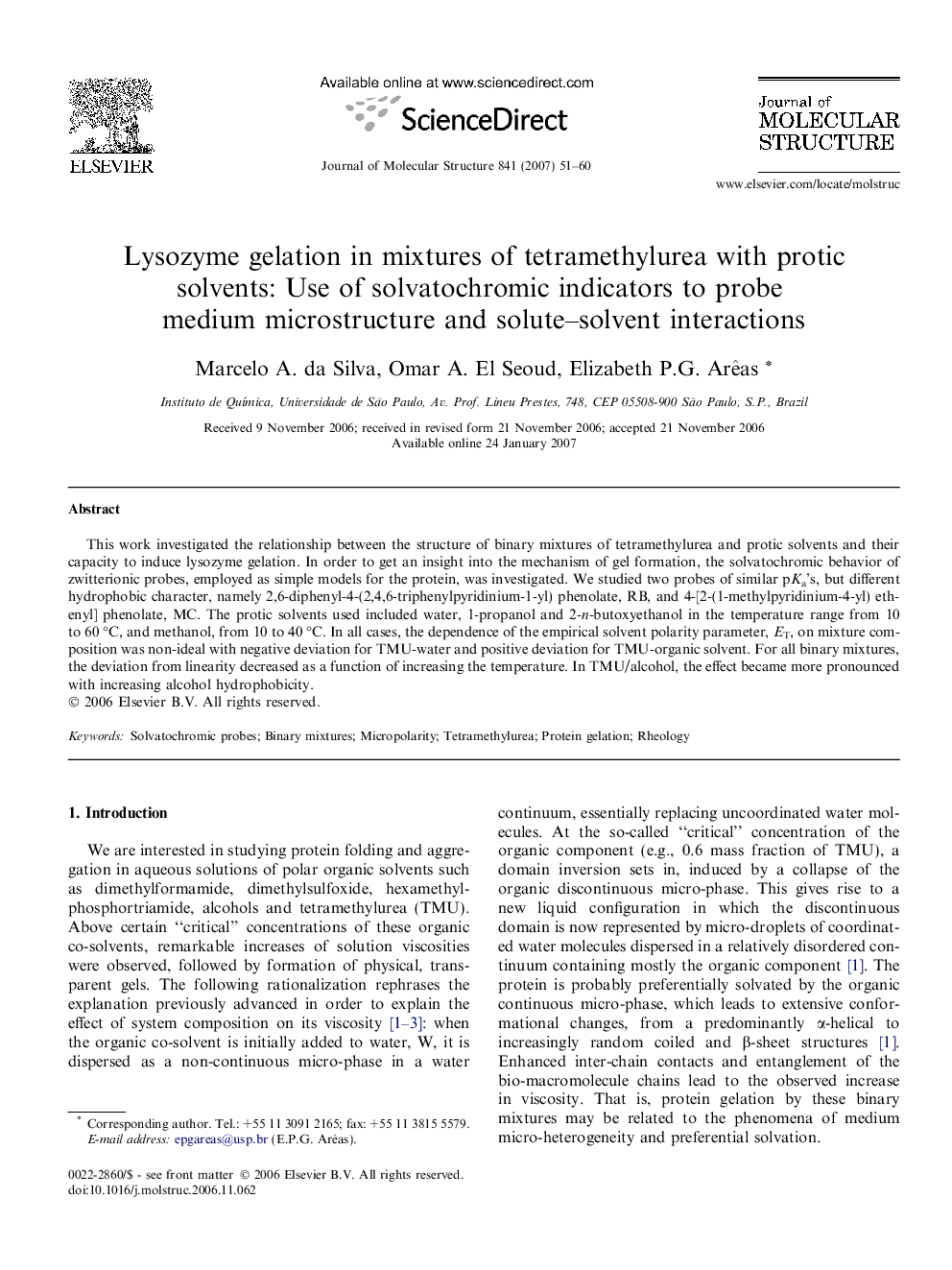| Article ID | Journal | Published Year | Pages | File Type |
|---|---|---|---|---|
| 1410772 | Journal of Molecular Structure | 2007 | 10 Pages |
This work investigated the relationship between the structure of binary mixtures of tetramethylurea and protic solvents and their capacity to induce lysozyme gelation. In order to get an insight into the mechanism of gel formation, the solvatochromic behavior of zwitterionic probes, employed as simple models for the protein, was investigated. We studied two probes of similar pKa’s, but different hydrophobic character, namely 2,6-diphenyl-4-(2,4,6-triphenylpyridinium-1-yl) phenolate, RB, and 4-[2-(1-methylpyridinium-4-yl) ethenyl] phenolate, MC. The protic solvents used included water, 1-propanol and 2-n-butoxyethanol in the temperature range from 10 to 60 °C, and methanol, from 10 to 40 °C. In all cases, the dependence of the empirical solvent polarity parameter, ET, on mixture composition was non-ideal with negative deviation for TMU-water and positive deviation for TMU-organic solvent. For all binary mixtures, the deviation from linearity decreased as a function of increasing the temperature. In TMU/alcohol, the effect became more pronounced with increasing alcohol hydrophobicity.
